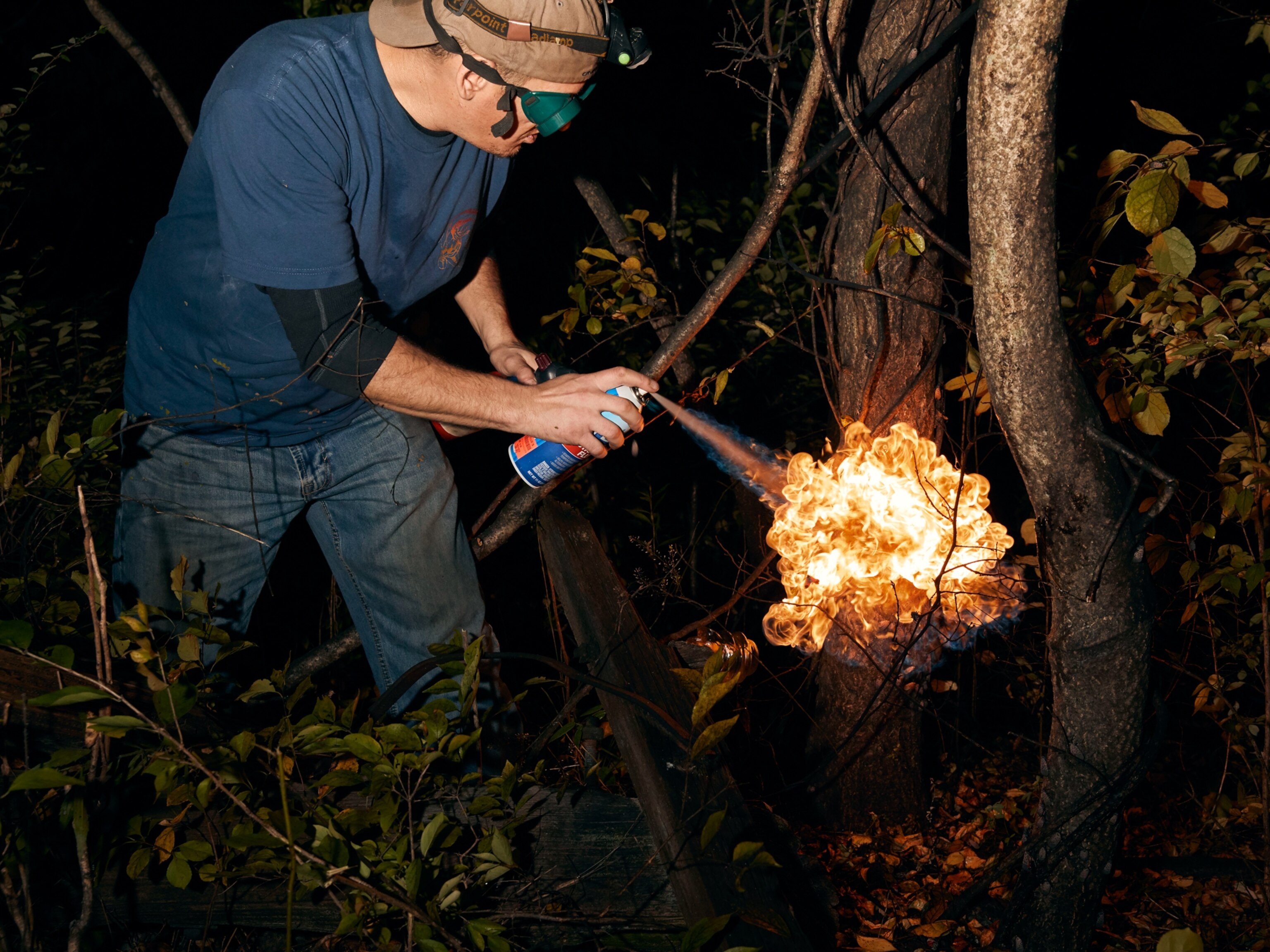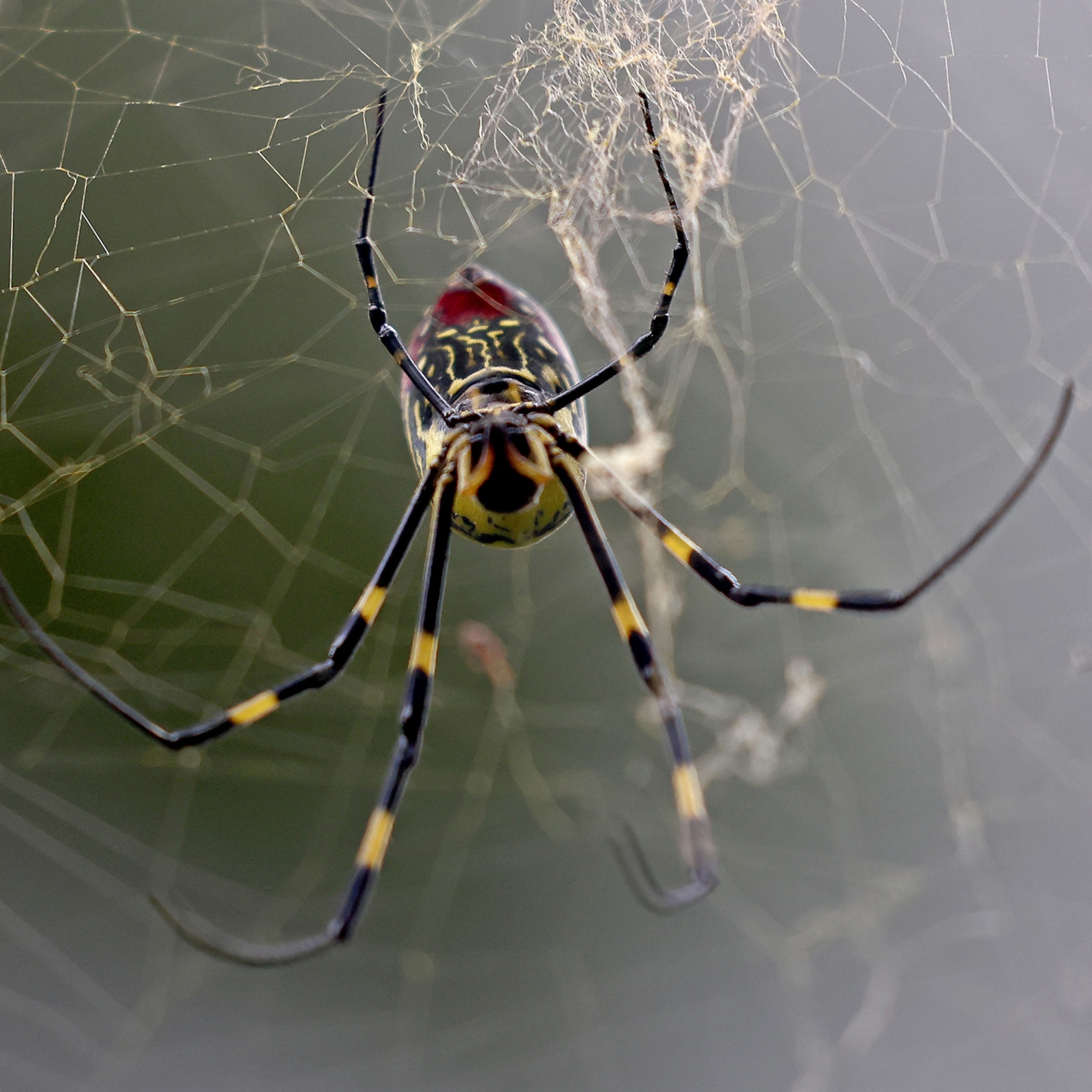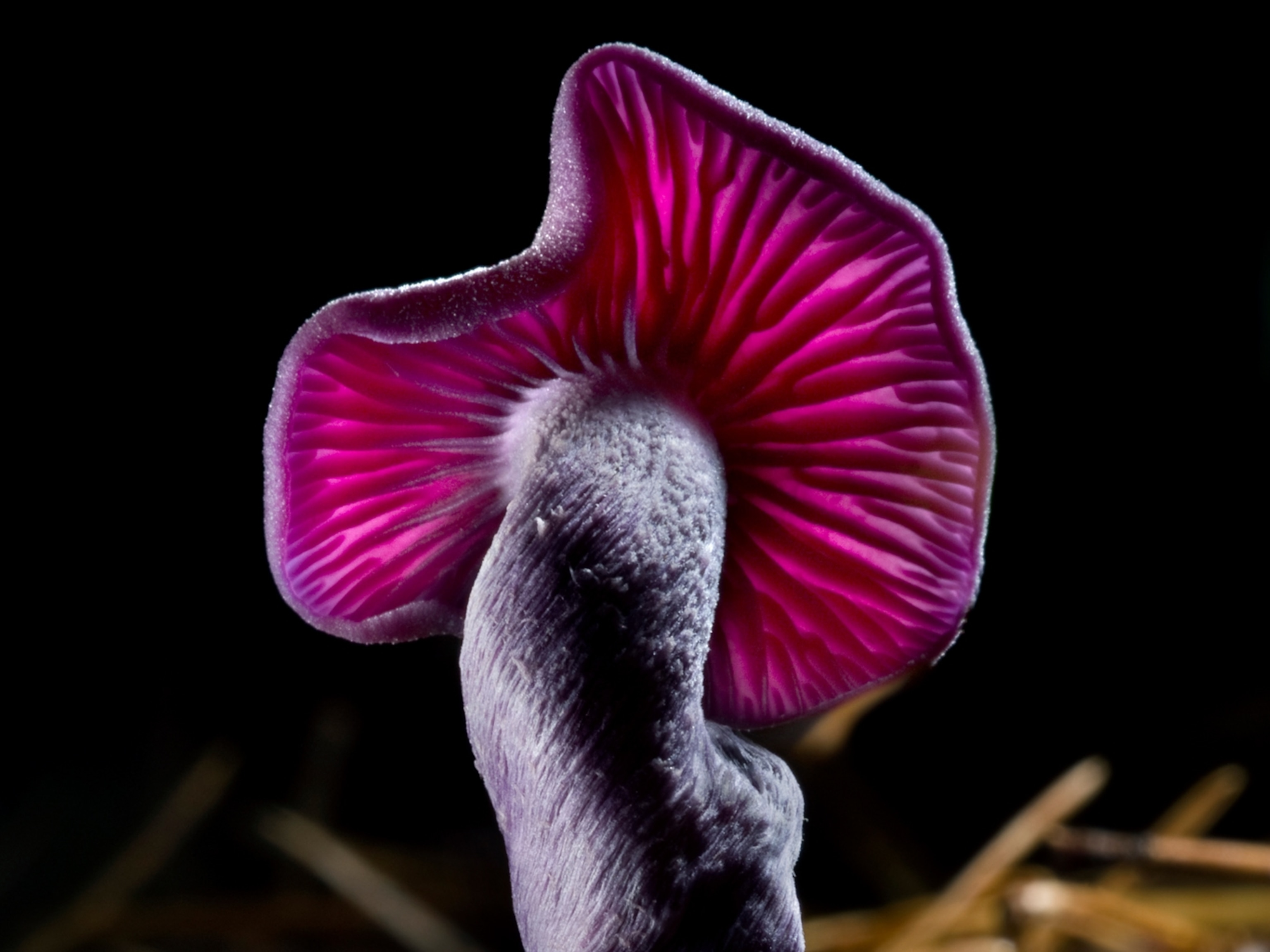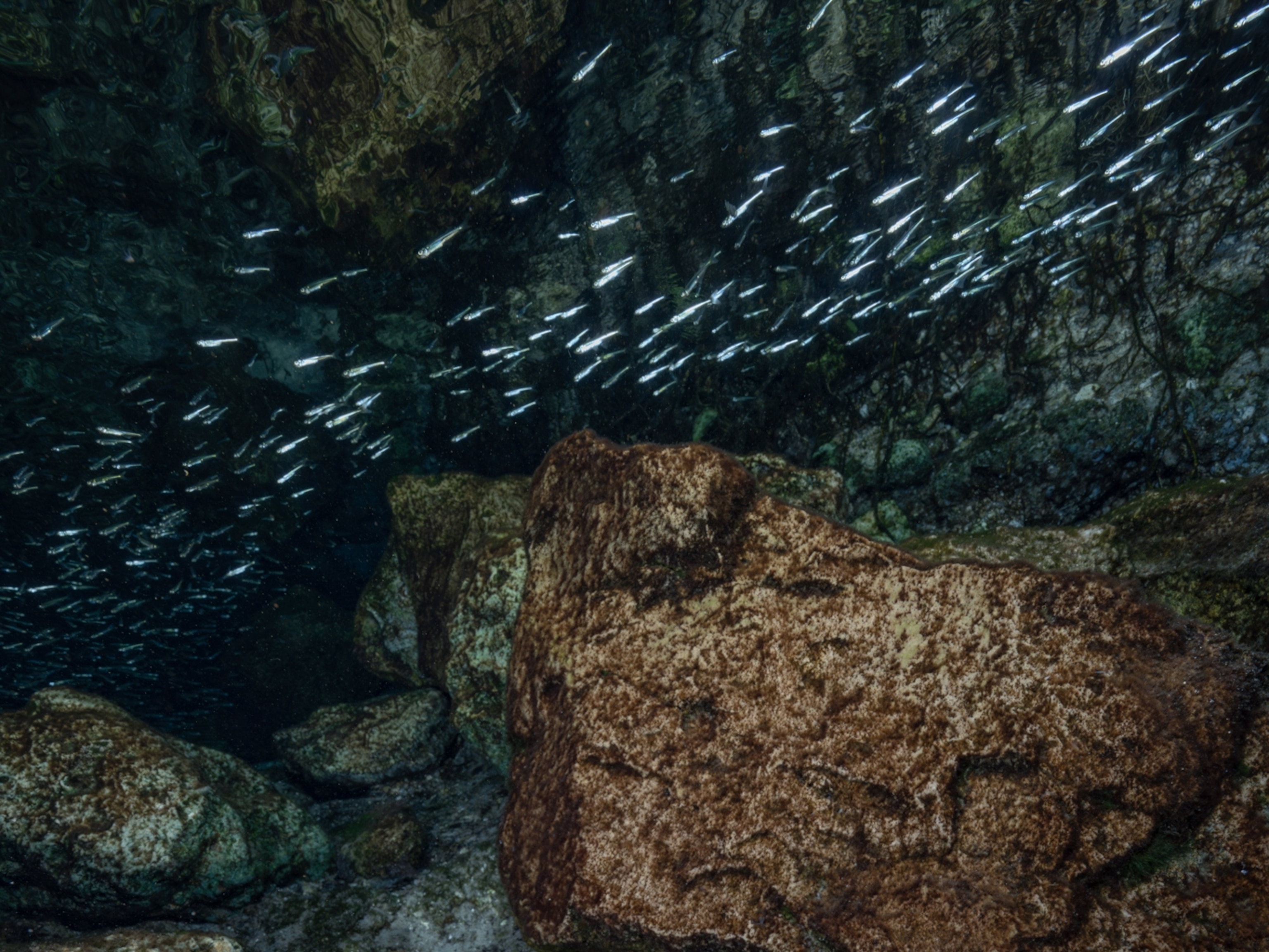Invasive spotted lanternflies have a taste for grapes—what does that mean for wine?
For the first time, the insects have been recorded in New York’s wine country, but bug-sniffing dogs could be a critical tool to stop the spread.

In mid-July, a private citizen in New York State’s Finger Lakes noticed a polka-dotted insect smaller than an M&M crawling on their backyard grapevines. They knew this was no ordinary bug—but the nymph of an invasive species known as the spotted lanternfly—and called the state’s integrated pest management program right away.
Further inspection revealed what U.S. viticulturists have been dreading—the spotted lanternfly had arrived in New York wine country.
“We’ve always told the growers in the Finger Lakes, it’s not a matter of if they get here. It’s when they’ll get here,” says Hans Walter-Peterson, a viticulture specialist for Cornell University’s Cooperative Extension. “So when ended up being 2024.”
Native to Asia, spotted lanternflies have spread to 18 states since they were first discovered in Berks County, Pennsylvania, in 2014. As adults, the insects can be more than an inch long, and have powerful jumping muscles and capable wings that allow them to spread at a rate of about 40 miles each year. For those insects found far from Pennsylvania, it's likely due to adults and weather-proof egg masses inadvertently hitching a ride on vehicles.
As true bugs in the order Hemiptera, spotted lanternflies suck nutrients out of host plants with mouthparts that act like a hypodermic needle. (Read more: “Inside the race to kill an invasive menace—before it gets to a town near you.”)
“It’s really different from what most insects do, which is chew on plants,” says Holly Shugart, an entomologist and postdoctoral researcher at Pennsylvania State University.
The problem is that when too many lanternflies siphon nutrients from a grapevine, they can reduce fruit yields, affect fruit quality, and even kill the host plant. They can also transmit deadly pathogens to those plants, such as black sooty mold.


Due to all of these factors, researchers in one study estimated that spotted lanternflies could lead to a loss of $554 million annually and almost 5,000 jobs just in the state of Pennsylvania.
While there are strong winemaking industries in many eastern U.S. states, New York is far and away the largest producer of wine in the region, and ranks the third-highest wine-producing state in the nation.
Fortunately, scientists and industry experts are taking the threat seriously and doing everything they can to learn about the insects before they make it to other agricultural regions, such as the Great Lakes or even, though less likely, Napa Valley.
And while it seems the insects are less a threat to hardwood trees and forests than initially feared, the danger for certain crops remains all too real.
Grapes of wrath
To understand the risk posed by spotted lanternflies to the nation’s wine grapes, beer hops, and a myriad of other crops, Shugart has been studying adult insects that feed on a single plant.
She’s found when adult spotted lanternflies are allowed to feed exclusively on avocado trees, they only survive seven days, according to unpublished data Shugart is presenting to the 2024 Spotted Lanternfly Research and Technical Development Meeting in Wooster, Ohio, this week.
Meanwhile, on almond, orange, and kiwi trees, the insects last for 12 to 13 days. But on sauvignon blanc grapevines?
“They survived for 60 days,” says Shugart. “They’re really happy on grape.”
Shugart also weighed each lanternfly to assess its overall health. And here again, she found that while lanternflies lost weight on hops, citrus, and avocado, on grapes, they gained 0.43 gram.


“When you’re an insect, that’s a good amount,” says Shugart.
While it might seem like good news for beer and citrus industries that adult lanternflies didn’t put on weight while feeding on those crops, Shugart says preliminary data also shows that spotted lanternfly nymphs prefer these foods. And that’s a huge concern for growing regions like California, where the insects could conceivably spread by truck or rail. (Learn about the joro spider, another invasive species recently found in the northern U.S.)
“California is a place where there is citrus, almond, avocado… all right next to vineyards,” says Shugart.
“This is a complicated insect with complicated life cycle,” that eats a lot of plants, she says. “And that just in itself makes it really hard to predict how it's going to behave every time it invades a new territory.”
Release the hounds
One promising new avenue in the effort to prevent the spotted insects from popping up somewhere new? Lanternfly-sniffing dogs. Just as canines have been trained to sniff out explosives, drugs, and even viruses, such as COVID-19, the animals may also be a critical tool in the fight against invasive species. (Learn how dogs put their noses to work sniffing out wildlife.)
“Pretty much everything has a smell,” says Sally Dickinson, a doctoral candidate at Virginia Tech.
And that goes for spotted lanternfly egg masses, which the insects produce in the fall and secrete in out-of-the-way hiding spots. In nature, that might mean the underside of a branch. But in human-dominated environments, the insects can attach their eggs to metal or plastic just as well as wood.
In a recent proof of concept study also being presented at the Ohio meeting, Dickinson showed that volunteer pet owners and their dogs could be trained to sniff out spotted lanternfly egg masses with a success rate of 80 percent or more in double-blind odor recognition tests. What’s more, the dogs don’t have German shepherds or bloodhounds to do so.
In fact, during one field test, a bouncy French bulldog named Xephyr kept alerting that she’d smelled eggs on a grapevine, even though the owners had already swept the vineyard.
“That little Frenchie was adamant that it had found something,” says Dickinson. “And it took me literally laying down on my back in the grass and looking up at the underside of the vineyards to find those egg masses.”
While the program is still in early stages, Dickinson and her colleagues have already enrolled 186 volunteer dog teams that can scour vineyards for new infestations or cargo, railway cars, vehicles, or any other objects destined for international or interstate travel.
“The big take away is that visual inspection is simply not enough to locate this particular species,” says Dickinson.
The more you know
A four-hour drive from where the spotted lanternfly invasion began, researchers in and around Pittsburgh want to know how life in America might be changing the spotted lanternfly.
“They will likely evolve as they persist here,” says Michelle Duennes, an entomologist at Saint Vincent College.
For instance, Duennes says U.S. birds are increasingly learning that most lanternflies are not toxic, which may influence the bugs’ behavior by forcing them to adapt to a particular predator, such as jumping faster or higher.
Studying a newly established insect population is also a golden opportunity to catalogue their DNA and observe how their genes may shift over time, says Duennes and her colleague, Chatham University biochemist Al McDonnell.
For instance, the researchers say “things are very different from last year,” noting that previously a lot of the lanternflies they encountered were mysteriously on the ground.
“So a lot of people thought that they were gone and that they didn’t exist this year,” says McDonnell. “But that was all lies. They were in the trees.”
For more information on how to help prevent the spread of invasive spotted lanternflies, visit the USDA Animal and Plant Health Inspection Service website.








